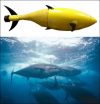(Press-News.org) OAK BROOK, Ill. – September 19, 2012 – A new study from researchers at the Mayo Clinic Arizona showed that system-wide implementation of a split-dose preparation as the primary choice for colonoscopy significantly improved both polyp detection rates and adenoma (precancerous polyp) detection rates, overall quality of the preparation, and colonoscopy completion rates. The study appears in the September issue of GIE: Gastrointestinal Endoscopy, the monthly peer-reviewed scientific journal of the American Society for Gastrointestinal Endoscopy (ASGE).
Colorectal cancer develops slowly, therefore screening for the disease is especially important. Colonoscopy screening allows for the detection and removal of precancerous polyps (small growths in the colon) during the same exam and before the polyps turn into cancer. One of the most important steps in colonoscopy is patient bowel preparation. Adequate preparation ensures that the colon is thoroughly cleaned before the exam so that the physician can clearly see the entire colon to look for abnormalities, such as colon polyps, during the procedure. Cleansing the colon before a colonoscopy is called bowel preparation, or "prep." It involves taking medication that causes diarrhea, emptying the colon. The medication is taken by mouth, and comes in liquid or tablet form. Patients also need to change what they eat during the day or two before the colonoscopy.
A good-quality bowel preparation is essential for colonoscopy to be effective. Inadequate bowel preparation can result in incomplete procedures, missed lesions, higher complication rates, and increased costs resulting from repeated procedures. The polyethylene glycol (PEG) solution is commonly used as a cleansing bowel preparation because it is safe and does not cause major fluid and electrolyte shifts. A major disadvantage, however, is the large volume required to be taken over a short time that may result in patient intolerance and poor compliance, leading to a poor preparation. Recent studies have explored new approaches in administering PEG solutions to improve patient tolerability, compliance, and efficacy. Splitting the preparation is such an approach. Patients are advised to consume two or three liters the night before and one or two liters the morning of the procedure.
"A recent meta-analysis of randomized studies using split-dose preparations suggested a significant improvement in the quality of preparation and patient compliance. However, the effects of split-dose preparations on other quality indicators of colonoscopy, such as cecal intubation (colonoscopy completion) and adenoma detection rates, have not been evaluated, as far as we know," said study lead author Suryakanth R. Gurudu, MD, Division of Gastroenterology and Hepatology, Mayo Clinic Arizona. "In our study, we have demonstrated, for the first time to our knowledge, that system-wide implementation of a split-dose preparation for colonoscopy significantly improves both polyp detection rates and adenoma detection rates as well as improves the quality of the preparation and colonoscopy completion rates. These results confirm the benefit of split-dose preparations and the importance of bowel preparation in the detection of colon polyps."
Methods
The primary aim of this study was to compare polyp detection rates (PDRs) and adenoma detection rates (ADRs) before and after implementation of split-dose preparations (SDP) as the preferred bowel preparation in a tertiary GI practice. Secondary goals were to compare the quality of the preparation and cecal intubation rates (colonoscopy completion rate) before and after implementation of the SDP. This was a retrospective study at Mayo Clinic Arizona. Electronic medical records of all the patients who underwent colonoscopy from January 2009 to December 2009 (before SDP) and from October 2010 to March 2011 (after SDP) were reviewed. All patients who underwent colonoscopy for screening and surveillance of colon polyps and cancer were included in the study.
The bowel preparation choices for split dosing were four-liter PEG electrolyte solution or MoviPrep (Salix Pharmaceuticals Inc., Raleigh, NC). Patients were instructed to avoid eating a high-fiber diet for two days before taking the bowel preparation and to drink only clear liquids for the entire day before colonoscopy. With the four-liter PEG solutions, patients were instructed to drink three liters the night before, starting at 6:00 pm, and one liter at least four hours before the scheduled procedure time on the day of the procedure. Patients using MoviPrep (after preparing the solution according to manufacturer's specifications) were instructed to drink half of the volume the night before colonoscopy, starting at 6:00 pm, and the other half at least four hours before the scheduled procedure time on the day of the procedure. All patients were instructed to take nothing by mouth for at least three hours before the procedure. Patients who had an early morning procedure or long travel time to the endoscopy unit were offered the option of taking the entire preparation the night before (nonsplit dose).
Results
After the application of exclusion criteria, there were 3,560 patients in the pre-SDP group and 1,615 patients in the post-SDP group. The pre-SDP and post-SDP patient groups were similar in age, body mass index, and gender. The mean ages of patients were 62 and 61 years, respectively, in the pre-SDP and post-SDP groups. SDP use increased significantly from 9 percent to 74 percent after implementation. In comparison with the pre-SDP group, both PDRs (44.1 percent to 49.5 percent) and ADRs (26.7 percent to 31.8 percent) significantly improved in the post-SDP group. The cecal intubation rate significantly increased from 93.6 percent to 95.5 percent in the post-SDP group.
Bowel preparation quality also improved significantly in the post-SDP group. The improvement was noted mainly in patients rated with good to excellent preparations (34.9 percent to 53.9 percent), at the expense of those rated with fair to adequate preparations (54.3 percent to 37.8 percent), and to a lesser degree in those with poor to inadequate preparations (10.6 percent to 8.3 percent).
Limitations noted by the researchers included the study's retrospective design and not all endoscopists were the same in both periods. Three endoscopists from the pre-SDP period left the institution and were replaced by five other endoscopists in the post-SDP period. The researchers concluded that system-wide implementation of split-dose preparation as the primary choice for colonoscopy significantly improved both PDRs and ADRs, overall quality of the preparation, and colonoscopy completion rates.
INFORMATION:
About the American Society for Gastrointestinal Endoscopy
Since its founding in 1941, the American Society for Gastrointestinal Endoscopy (ASGE) has been dedicated to advancing patient care and digestive health by promoting excellence and innovation in gastrointestinal endoscopy. ASGE, with more than 12,000 members worldwide, promotes the highest standards for endoscopic training and practice, fosters endoscopic research, recognizes distinguished contributions to endoscopy, and is the foremost resource for endoscopic education. Visit www.asge.org and www.screen4coloncancer.org for more information and to find a qualified doctor in your area.
About Endoscopy
Endoscopy is performed by specially-trained physicians called endoscopists using the most current technology to diagnose and treat diseases of the gastrointestinal tract. Using flexible, thin tubes called endoscopes, endoscopists are able to access the human digestive tract without incisions via natural orifices. Endoscopes are designed with high-intensity lighting and fitted with precision devices that allow viewing and treatment of the gastrointestinal system.
Split-dose preparation for colonoscopy increases precancerous polyp detection rates
2012-09-20
ELSE PRESS RELEASES FROM THIS DATE:
Researchers identify possible key to slow progression toward AIDS
2012-09-20
One of the big mysteries of AIDS is why some HIV-positive people take more than a decade to progress to full-blown AIDS, if they progress at all.
Although the average time between HIV infection and AIDS in the absence of antiretroviral treatment is about 10 years, some individuals succumb within two years, while so-called slow progressors can stay healthy for 20 years or longer.
Researchers already know that many slow progressors carry a gene called HLA-B*57 (B57), an immune gene variant that is found in less than 5 percent of the general population but in 40 to ...
Research suggests promise of cell therapy for bowel disease
2012-09-20
WINSTON-SALEM, N.C. – Sept. 19, 2012 – New research shows that a special population of stem cells found in cord blood has the innate ability to migrate to the intestine and contribute to the cell population there, suggesting the cells' potential to treat inflammatory bowel disease (IBD).
"These cells are involved in the formation of blood vessels and may prove to be a tool for improving the vessel abnormalities found in IBD," said lead author Graca Almeida-Porada, M.D., Ph.D., a professor at Wake Forest Baptist Medical Center's Institute for Regenerative Medicine. The ...
Misinformation: Psychological Science shows why it sticks and how to fix it
2012-09-20
Childhood vaccines do not cause autism. Barack Obama was born in the United States. Global warming is confirmed by science. And yet, many people believe claims to the contrary.
Why does that kind of misinformation stick? A new report published in Psychological Science in the Public Interest, a journal of the Association for Psychological Science, explores this phenomenon. Psychological scientist Stephan Lewandowsky of the University of Western Australia and colleagues highlight the cognitive factors that make certain pieces of misinformation so "sticky" and identify some ...
Ultra-distant galaxy spied amidst cosmic 'Dark Ages'
2012-09-20
Pasadena, CA— With the combined power of NASA's Spitzer and Hubble Space Telescopes, as well as a cosmic magnification effect, a team of astronomers, including Carnegie's Daniel Kelson, have spotted what could be the most distant galaxy ever seen. Light from the young galaxy captured by the orbiting observatories was emitted when our 13.7-billion-year-old universe was just 500 million years old. Their work is published September 20 by Nature.
The far-off galaxy existed within an important era when the universe just emerged from the so-called cosmic Dark Ages. During this ...
Robotic tuna is built by Homeland Security
2012-09-20
No question about it… they're very good at what they do. But they don't take well to orders, especially those to carry out inspection work in oily or dangerous environments, or in any kind of harsh environment, for that matter. Still, they're one of the fastest and most maneuverable creatures on the planet, having extraordinary abilities at both high and low speeds due to their streamlined bodies and a finely tuned muscular/sensory/control system.
This impressive creature is the humble tuna fish.
The Department of Homeland Security's (DHS) Science and Technology ...
NASA satellite sees fading rainfall in Tropical Storm Nadine
2012-09-20
Tropical Storm Nadine continues to bring rains and winds to the Azores in the eastern Atlantic Ocean, but that rainfall continues to diminish according to data from NASA satellites. NASA's unmanned Global Hawk aircraft is also exploring the storm today, Sept. 19.
A tropical storm warning is in effect on Sept. 19 for the islands of Flores, Corvo, Faial, Pico, Sao Jorge, Graciosa, Terceira, Sao Miguel and Santa Maria in the Azores.
The Tropical Rainfall Measuring Mission (TRMM) satellite flew over Nadine on Sept. 19 at 1013 UTC (6:13 a.m. EDT) and captured data on rainfall ...
Arctic sea ice hits smallest extent in satellite era
2012-09-20
The frozen cap of the Arctic Ocean appears to have reached its annual summertime minimum extent and broken a new record low on Sept. 16, the National Snow and Ice Data Center (NSIDC) has reported. Analysis of satellite data by NASA and the NASA-supported NSIDC at the University of Colorado in Boulder showed that the sea ice extent shrunk to 1.32 million square miles (3.41 million square kilometers).
The new record minimum measures almost 300,000 square miles less than the previous lowest extent in the satellite record, set in mid-September 2007, of 1.61 million square ...
Climate scientists put predictions to the test
2012-09-20
Climate-prediction models show skills in forecasting climate trends over time spans of greater than 30 years and at the geographical scale of continents, but they deteriorate when applied to shorter time frames and smaller geographical regions, a new study has found.
Published in the Journal of Geophysical Research-Atmospheres, the study is one of the first to systematically address a longstanding, fundamental question asked not only by climate scientists and weather forecasters, but the public as well: How good are Earth system models at predicting the surface air temperature ...
Kelsey McBride PR Signs Author Robert Radcliffe
2012-09-20
Kelsey McBride, president of Kelsey McBride PR, officially announced today that Robert Radcliffe, author of 180 Degrees, signed on for her agency's PR services.
180 Degrees, by Robert Radcliffe, is an inspiring true story of a once homeless kid addicted to drugs, turned sober, self made millionaire by the age of 30.
"I turned my life around 180 degrees. I went from being a daily-using drug addict and occasional 'big shot' dealer to, eventually, a homeless junkie living on the streets. Today I am a completely sober, self-reliant, self-employed husband, father, ...
Jade Esteban Estrada Offers A Taste of HA!lapeño
2012-09-20
Acclaimed multi-media entertainer Jade Esteban Estrada will bring his special Latin flavor of stand-up comedy to National Hispanic Heritage Month, with a national tour and a special deal on his first comedy DVD.
During September and October, the comedian will offer his stand-up comedy DVD, "That Is So Gay!", for a discounted price of only $10. The deal - dubbed the HA!lapeño Especial - comes as Estrada prepares to launch his HA!lapeño Tour, which will include an appearance at the Ventura Harbor Comedy Club in Ventura, California on Thursday, September 27, as ...



